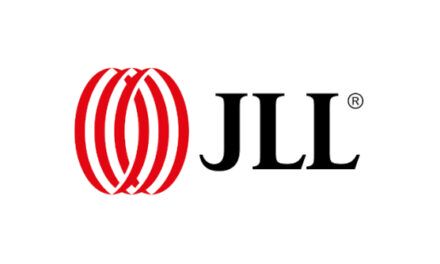
By Michał Kozdrój, head of Industrial Agency, Knight Frank

In recent years, it was impossible not to notice a new trend called ESG. ESG is an acronym for Environment, Social Responsibility and Corporate Governance. This trend sets out the rules on how investors, businesses, lenders and asset managers should conduct their activities in the areas listed above. Much depends on whether companies implement and adhere to their ESG strategies. They determine whether they will get financing and at what interest rate, or whether other companies will want to cooperate them.
ESG strategies implemented by businesses should cover each of the three letters. In this article, however, I would like to focus primarily on the environmental impact of ESG on warehouse buildings and their construction.
The measure of the environmental impact of companies and their products is the carbon footprint, which determines the amount of greenhouse gases emitted into the environment. It is calculated for the entire product life cycle or for the company’s operations. The carbon footprint is carbon dioxide per unit of product. Due to the fact that the construction sector is responsible for almost 40% of emissions into the environment, it is impossible to ignore this fact when constructing warehouses.
EU Directives, governments and society are putting pressure on the industrial sector to reduce CO2 emissions to the environment as much as possible. The slow pace and reactive nature of legislative change mean that society cannot rely solely on governments and decision makers when it comes to sustainability issues. Increasingly, companies are also expected to take the initiative and take responsibility for the environment and the social environment within their reach. Developers and facility owners are adapting their existing buildings and implementing new technologies in new facilities to best implement their ESG strategies.
In May 2021, the Warsaw Stock Exchange issued its own ESG Reporting Guidelines, which sets out six environmental objectives for economic activity. These are climate mitigation; adaptation to climate change; sustainable use and protection of water and marine resources; transition to a circular economy; pollution prevention and control; and protection and restoration of biodiversity and ecosystems.
When analysing warehouse buildings in terms of their impact on the environment, we can distinguish several groups of impact. Each basic indicator may be relevant in the case of industrial buildings.
The three basic groups indicated in the WSE guidelines, on which the environmental part of the ESG focuses, are related to climate change, natural resources and pollution and waste. Within each metric, developers are making facility improvements to minimise the negative impact on the environment.
Climate change is being watched and felt by all of us. Global warming, shrinking glacier cover, rising average temperatures year on year, and air pollution are real problems the world over. Society expects decisive steps from the government to prevent these and other environmental problems. Individual awareness translates into changes in the operation of individual companies, for example, corporations impose an internal obligation to rent or own buildings that have obtained certain levels of green certification. Certificates such as LEED, BREEAM or HQE at the appropriate levels guarantee the use of sustainable development solutions.
In newly built facilities, it is much easier to introduce innovative solutions, because the facility can be designed with green solutions in mind. Today in Poland, we have ca. 27 million square meters of warehouse space, the vast majority of this consisting of older warehouses. In new buildings, the roof structure is designed that it can transfer the loads from an additional photovoltaic (PV) installation. Many millions of square meters have not been built with PV panels in mind, so an alternative solution is needed. The panels are mounted in green areas, over car parks, on facades or on outbuildings, or it remains to wait for perovskite coatings, which will be able to produce electricity at a low weight. Because energy-saving buildings do not have a high demand for electricity, it can be expected that energy banks will be installed together with PV installations, which will supply the building with night-time power.
Climate change indicators focus on greenhouse gas emissions into the atmosphere and energy consumption. Firms implementing ESG strategies mainly focus on ensuring that energy used in their processes comes from renewable sources, which is why tenants demand that new spaces be equipped with renewable energy devices.
Building regulations adapt to environmental trends from year to year, and so technical conditions regularly tightened the parameters of heat transfer coefficients from 2014 to 2021. In simple terms, this means the need to use thicker thermal insulation of walls and roofs, better window and door joinery, and tighter facilities with mechanical ventilation. This allows companies to reduce the amount of gas used to heat their facilities. Ceiling fans destratifiers, whose task is to ‘push’ warm air towards the floor, also have a large impact on reducing media consumption while maintaining thermal comfort.
Many logistics companies are considering modernising their fleet of trucks or buses for electric cars. It is easier to implement such solutions in new facilities. This creates a needed for larger transformers, photovoltaic installations, and the right cable infrastructure and chargers in car parks.
In existing older facilities, it is much easier to implement solutions such as switching to LED lighting. Currently, it is standard in A-class buildings. Additional modules are installed that regulate the light intensity depending on the amount of daylight entering the warehouse or a motion or presence detector.
In older buildings, owners are considering installing heat pumps for heating the office space. Together with photovoltaic panels, heat pumps will significantly reduce the energy bill.
Developers are considering the installation of wind turbines, which, although they have much lower efficiency than a PV installation, can be a good complement to the entire system.
When implementing an ESG strategy as part of the Climate Change Index, energy monitoring systems should not be forgotten. All kinds of building management systems, whether in a simplified form (smart metering) or full, are installed on facilities. They help facilitate settlements with tenants, and accurately indicate, predict and plan future consumption.
Due to the nature of their activities, companies can have a significant impact on the consumption of natural resources. ESG reporting in this aspect focuses primarily on water resources and the impact on biodiversity. Here, attention should be paid to any installation solutions in the facility that are related to water, both drinking and rainwater. One of the flagship solutions that allows buildings to achieve a higher rating in green certification is the use of automatic irrigation systems that use rainwater. Another solution to reduce water consumption is the grey water installation. The idea is to reuse rainwater or handwashing water to flush toilets. Such solutions also significantly reduce the amount of sewage disposed into the circulation.
Biodiversity indicators in warehouse parks can be implemented by planting meadows instead of lawns. Meadows are primarily a necessary environment for insects – pollinators such as bees, ladybirds, butterflies and others – and their greatest advantage is the reducing carbon dioxide from the environment (in particular from wasteful fossil-fuel-powered lawn mowers) and protecting the soil against erosion. At warehouse parks, we can also see beehives and insect hotels, which also fit into the ESG strategy of warehouse owners and have a positive impact on biodiversity. Beehives and flower meadows create an ecosystem for insects, and this demonstrates the social and ecological awareness of companies.
Waste and pollution management is mainly transferred to the tenants of warehouse facilities. Typically, lease agreements clearly indicate that tenants are responsible for their waste and pollution. However, owners and developers consciously approach the subject and require waste segregation. On such facilities we can find containers for waste paper and cardboard, or special containers for plastic and glass.
Reducing the carbon footprint focuses primarily on the service life of the facility. Photovoltaic panels, heat pumps, wind power plants, LED lighting, grey water installations taken together have a significant impact on the reduction of greenhouse gas emissions and on energy and water rainwater consumption.
This does not change the fact that a building in the very process of its creation is a product that generates a huge carbon footprint. For example, the concrete from which the main elements of the structure are made is made from cement. This is produced as a result of minerals being processed at temperatures of 1,450C. Steel for the roof structure and reinforcing bars is produced in huge steelworks and rolling mills that have a significant impact on the environment. It is not difficult to notice that the very process of creating materials for the construction of warehouses has a negative impact on the environment. The construction itself leaves much to be desired. Oil-powered construction equipment, high electricity consumption for construction work, and massive water use for processes all have a negative impact on the carbon footprint of the entire building as a product. At the same time, these negative aspects of facilities will have a huge impact on innovation in construction. Therefore, we should expect an evolution of ESG-inspired building materials in the near future. The creation of new, innovative materials and nanotechnologies will affect not only buildings, but also the entire system of training new staff of engineers and designers, and wooden elements, zero-emission steel and new construction solutions in warehouses may result in buildings that are no longer perceived as ordinary big boxes, but as works of architecture.



























